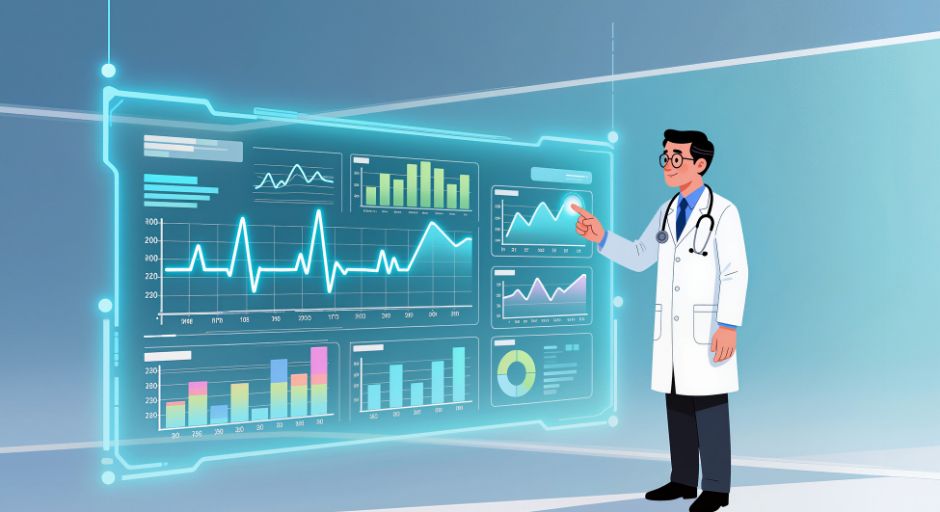
Tired of one-size-fits-all diets that never stick? Coach Delicia here, and I’m here to show you how AI is changing the game for weight loss and wellness. From smart wearables that track your sleep, stress, and heart rhythms to personalized meal and workout plans, AI takes the guesswork out of getting healthy so you can finally see results that actually last.
Hey everyone! It’s officially November here in Colorado, and as we hit the middle of the season, I want to talk about something seriously game-changing: Artificial Intelligence (AI).
I know, I know , it sounds super high-tech and maybe a little intimidating. You might think AI is just for self-driving cars or complicated coding. But this technology is already transforming the health and wellness world, and it might just be the key to ditching that frustrating “one-size-fits-all” diet mentality for good.
Here’s the deal: your weight loss journey is unique. It involves your specific metabolism, your stress levels, your sleep quality, and even the fact that you can’t stand broccoli. The old way was following a generic plan and hoping it stuck. The new way? Using AI to create a plan that’s literally tailored to your exact life and body.
AI takes all those tiny pieces of information you generate every single day, from your sleep tracker, food logs, heart rate, and even your mood, and finds patterns no human could ever process instantly. It sees the whole picture.
Let’s dive into how you can use this incredible tool to stop guessing and start seeing real results.

Most generic plans are based on averages. But who lives an average life? You’re not a number on a chart! AI changes the game because it uses your unique data to guide your progress.
Here are the biggest differences AI can bring to your Healthi journey:
Let’s be honest: the biggest headache of a health journey is meal planning. You have to balance your daily BITES, macros, family preferences, and whatever is actually in your fridge.
The AI Difference: AI tools can create entire weekly meal plans for you, not just based on your calorie goal, but also your budget, what ingredients you already have, your need for a quick lunch on Tuesdays, and any allergies you have.
You give AI the constraints, and it solves the puzzle. You get recipes that genuinely fit your real life.
We’ve all been there: you planned a high-intensity leg day, but you only got five hours of sleep. A regular plan tells you to power through, but that often leads to burnout or injury.
The AI Difference: Wearables like Apple Watch or Fitbit feed data to AI platforms that monitor your heart rate variability (HRV) and sleep quality. If the AI sees you had poor rest or high stress, it might suggest a lighter workout, a recovery walk, or yoga instead of HIIT.
It helps you train smarter, not just harder.
This is where it gets really cool. AI can actually help you head off challenges before they happen.
Finding Your Stress Triggers: The AI might notice patterns like, “Every time you log a high-BITE dinner, it’s a Wednesday, and you logged high work stress that afternoon.” It can predict when you’re most likely to struggle and send a proactive reminder or suggestion before you even reach for the snack drawer.
Plateau Prediction: AI systems can analyze data from thousands of similar users and predict when you’re likely to hit a weight loss plateau. Then, it can suggest proactive adjustments like changing your workouts or adding a strategic diet break before the stall even hits.

You don’t need to be a programmer to tap into this technology. You just need to know how to ask the right questions and use the right tools.
Forget complicated apps for a minute. You can use standard AI chat tools as a super-smart sounding board that’s always available.
Try prompts like:
Look for apps that mention AI, machine learning, or computer vision in their features.
Smart Wearables: Newer devices don’t just count steps or track sleep. They can detect early signs of sickness, irregular heart rhythms, and changes in recovery or stress levels. This kind of data gives AI deeper insight into how your body is actually doing day-to-day, helping it adjust recommendations in real time.
Metabolic Tracking: Devices like continuous glucose monitors (CGMs) and smart scales give AI the physiological data it needs to personalize your plan. It can analyze your actual blood sugar response to specific foods, which is something no generic diet could ever do.
Okay, deep breaths. Before you rely completely on technology, here’s the reality check: AI is a tool, not a human expert.
Fact Check Everything: AI can still make mistakes. Always double-check nutritional info or anything that seems off. Treat its suggestions as a starting point.
The Human Touch Matters: Studies show the best outcomes happen when AI is paired with human support. The AI can tell you what to do, but humans provide empathy, accountability, and emotional insight. Don’t ditch your Healthi accountability circle.
Data In, Data Out: AI’s accuracy depends on what you give it. If you “forget” that cookie, it can’t give you accurate guidance. Be honest — it’s here to help, not judge.

The best part about using AI in your health journey is that it puts the power back in your hands. It takes the guesswork out of nutrition and fitness so you can focus on what really matters: consistency, mindfulness, and enjoying your life.
This isn’t about chasing some generic goal. It’s about using the best technology available to achieve your specific, unique, amazing goals. AI just helps you find the right map to get there.
November 7, 2025